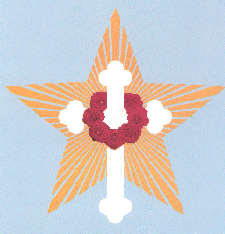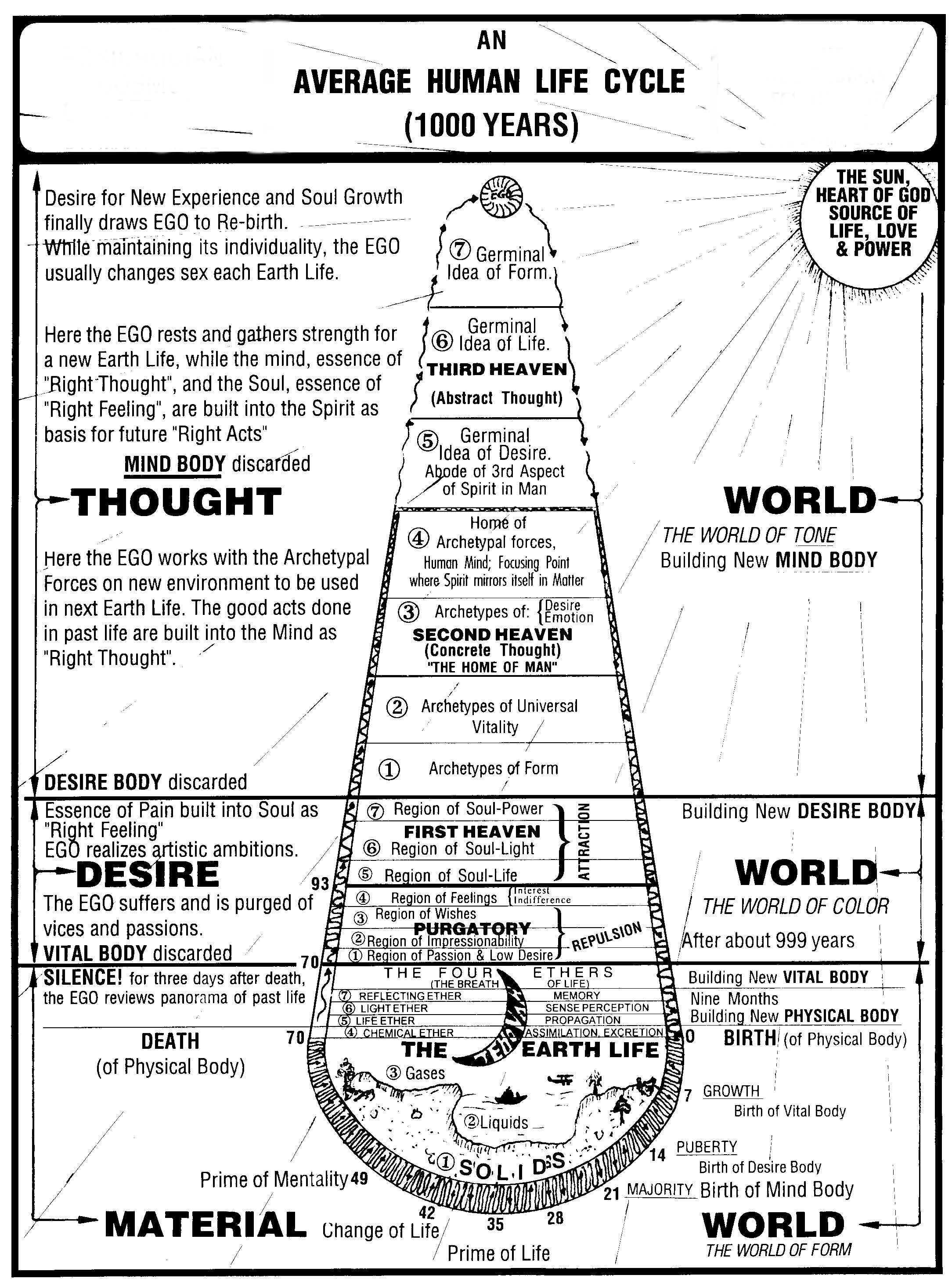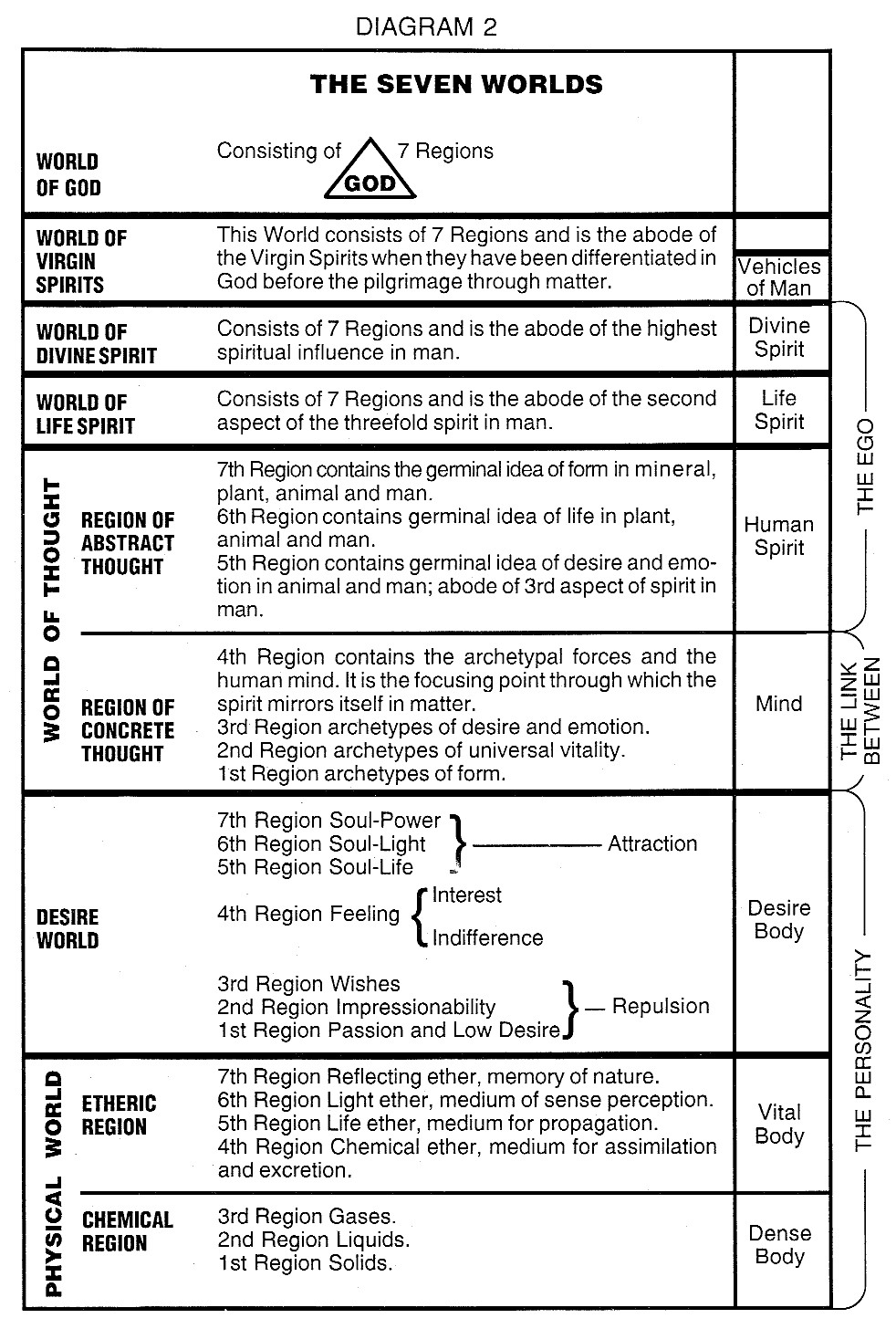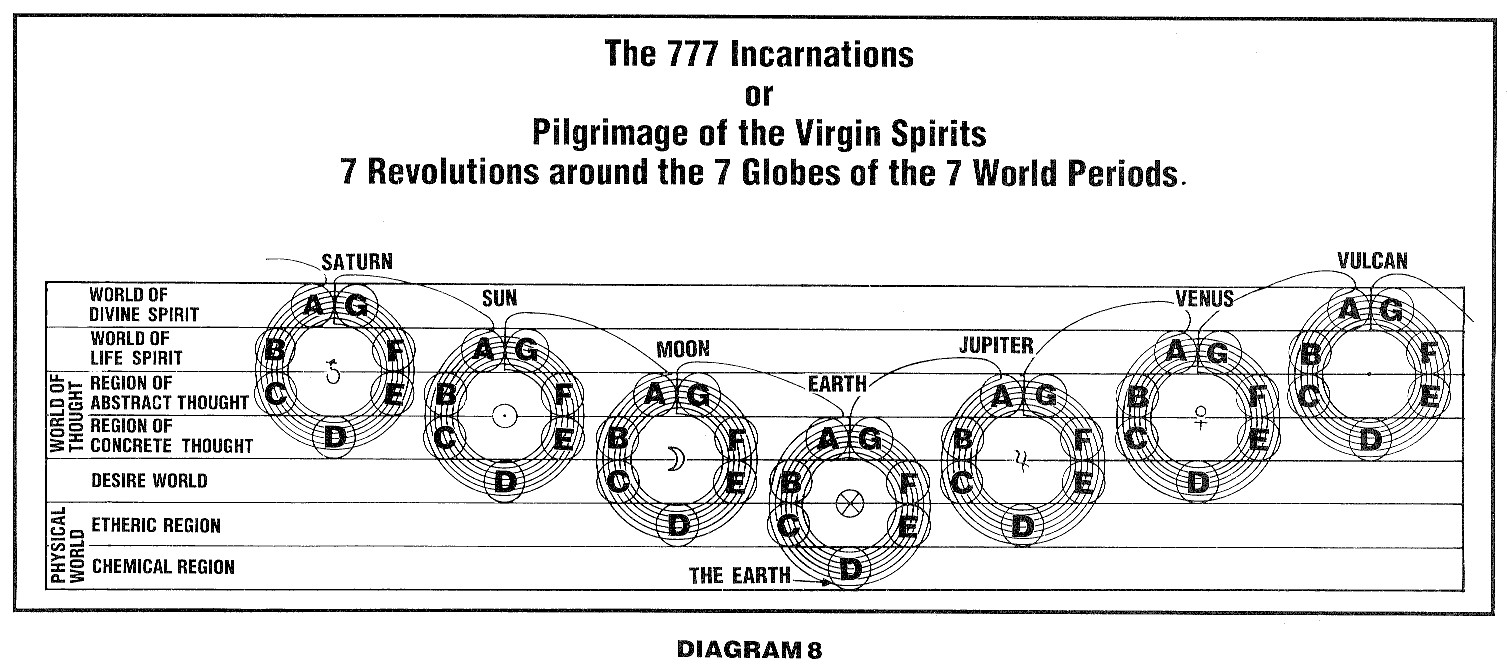
The Rosicrucian Emblem
The Symbolism of the Rose Cross
| rosanista.com | ||
| Simplified Scientific Christianity |

Viewed in its fullness, this wonderful symbol contains the key to man's past evolution, his present constitution and future development, together with the method of attainment. In the form where it is represented with a single rose in the center it symbolizes the spirit radiating from itself the four vehicles: the dense, vital and desire bodies plus the mind; where the spirit has drawn into its instruments and become the indwelling human spirit. But there was a time when that condition did not obtain, a time when the three-fold spirit hovered above its vehicles and was unable to enter. Then the cross stood alone without the rose, symbolizing the condition which prevailed in the early third of Atlantis. There was even a time when the upper limb of the cross was lacking and man's constitution was represented by the Tau (T) that was in the Lemurian epoch when he had only the dense, vital and desire bodies, but lacked the mind. Then the animal nature was paramount. Man followed desire without reserve. At a still earlier time, in the Hyperborean Epoch, he was also minus the desire body and possessed only the dense and vital bodies. Then man-in-the-making was like the plants: chaste and devoid of desire. At that time his constitution could not have been represented by a cross. It was symbolized by a straight shaft, a pillar (I).
This symbol has been considered phallic, an emblem showing the licentiousness of the people who worshiped it. Truly it is a symbol of generation, but generation is by no means synonymous with degradation—far from it—the pillar is the lower limb of the cross, symbolical of man-in-the-making when he was plantlike. The plant is unconscious of passion, desire, innocent of evil. It generates and perpetuates its species in a manner so pure, so chaste, that properly understood, it is a model for fallen and passionate humanity to worship as an ideal and it was given to earlier races with that intent. The Phallus and Yona used in the Greek mystery temples were given by the hierophants in that spirit, and over the temple was placed the enigmatical words: "Man, know thyself," which motto, properly understood, is similar to that of the Rose Cross, for it shows the reason for man's fall into desire, passion and sin, and gives the key to his liberation in the same way that the roses upon the cross indicate the path of liberation.
The plant is innocent, but not virtuous; it has neither desire not choice. Man has both. He may follow desire or not as he wishes, that he may learn to master himself.
While he was plant-like, a hermaphrodite, he could generate from himself without the help of another, but though he was as chaste and as innocent as the plants, he was also as unconscious and inert. In order to advance he must have desire to spur him on, and a mind to guide him, and therefore half his creative force was retained for the purpose of building a brain and a larynx. He had at that time a round shape similar to that of the embryo, and the present larynx was a part of the creative organ which adhered to the head when the body straightened out. The connection between the two is seen even today in the fact that the boy, who expresses the positive pole of the generative force, changes his voice at puberty. That the same force which builds another body when it is sent outwards builds the brain when retained is equally clear when we consider that sex mania leads to insanity, while the profound thinker will feel little inclination for amorous practices. He uses all his creative force to generate thought instead of wasting it in sense gratification.
At the time when man commenced to withhold half his creative force for the above mentioned purpose, his consciousness was directed inwards to build organs. He was capable of seeing these organs and he used the same creative force then under the direction of Creative Hierarchies in planning and in executing plans of organs, that he now uses in the outer world to build airships, houses, automobiles, telephones, etc. Then he was unconscious of how that half of the creative force was used which was sent outwards for generation of another body.
Generation was carried on under the guidance of Angels. At certain times of the year they herded the growing man together in great temples and there the generative act was performed. Man was unconscious of the fact. His eyes had not yet been opened, and though it was necessary for him to have a partner who had the half or other pole of the creative force available for generation which he retained to build organs within, he did not at first know his wife. In ordinary life he was shut within himself so far as the Physical World was concerned, but it was different when he was brought into such intimate and close touch with another, as in the case of the generative act. Then for the moment the spirit pierced the veil of flesh and Adam knew his wife. He had ceased to know himself—thus his consciousness became more and more and more centered outside himself in the outside world and he lost his inner perception. That cannot be fully regained until he has passed to the stage where it is no longer necessary to have a partner in generation, and he has reached the development where he can again utilize his whole creative force at will. Then he will again know himself as he did during his stage of plant-like existence, but with this all important difference that he will use his creative faculty consciously, and will not be restricted to using it solely for the pro-creation of his own species, but may create whatever he will. Neither will he use his present organs of generation, but the larynx will speak the creative word as directed by the spirit through the co-ordinating mechanism of the brain. Thus the two organs built by half the creative force will in time be the means whereby man will eventually become an independent self-conscious creator.
Even at the present time man molds matter both by thought and voice, as instanced in scientific experiments where thoughts have created an image on photographic plates, and where the human voice has created geometrical figures in sand, etc. In proportion as man becomes unselfish he will release the creative force held in leash. That will give him added thought power and enable him to utilize it for upliftment of others instead of to plan how to degrade and subject others to his will. He will learn how to master himself and cease to try to master others, except it be done temporarily for their good, but never for selfish ends. Only one who has mastered himself is qualified to rule others, and competent to judge when that should be done, and what is best for them.
Thus we see that in time the present passionate mode of generation will be again superseded by a pure and more efficient method than the present, and that also is symbolized in the Rose Cross where the rose is placed in the center between the four arms. The long limb represents the body, the two horizontals, the two arms, and the short upper limb, the head. The rose is in place of the larynx.
The rose, like any other flower, is the generative organ of the plant. Its green stem carries the colorless, passionless plant blood. The blood red rose shows the passion filled blood of the human race, but in the rose the vital fluid is not sensuous, it is chaste and pure. Thus it is an excellent symbol of the generative organ in the pure and holy state to which man will attain when he has cleansed and purified his blood from desire, when he has become chaste, pure and Christ-like.
Therefore the Rosicrucians look ardently forward to the day when the roses shall bloom upon the cross of humanity, therefore the Elder Brothers greet the aspiring soul with the words of the Rosicrucian Greeting: "May the Roses bloom upon your Cross," and therefore the greeting is given in the meetings of the Fellowship Centers by the leader to the assembled students, probationers and disciples who respond to the greeting by saying "And on yours, also."
John speaks of his purification (1st Epistle, iii, 9) and says that he who is born of God cannot sin, for he keepeth his seed within him. It is an absolute necessity to progress that the aspirant should be chaste. Yet it must be borne in mind, that absolute celibacy is not required of man until he has reached a point where he is ready for the great initiations, and that it is a duty we owe to the whole to perpetuate the race. If we are mentally, morally, physically and financially able, we may approach the act of generation as a holy sacrifice laid upon the altar of humanity, but not for sensual pleasure. Neither should it be performed in an austere, forbidding frame of mind, but in glad giving up of oneself for the privilege of furnishing a friend seeking rebirth with the body and environment he needs for development. Thus we shall also help him cultivate the blooming roses upon his cross.

|

|

|
|
|
Contemporary Mystic Christianity |
|
|
This web page has been edited and/or excerpted from reference material, has been modified from its original version, and is in conformance with the web host's Members Terms & Conditions. This website is offered to the public by students of The Rosicrucian Teachings, and has no official affiliation with any organization. | Mobile Version | |
|